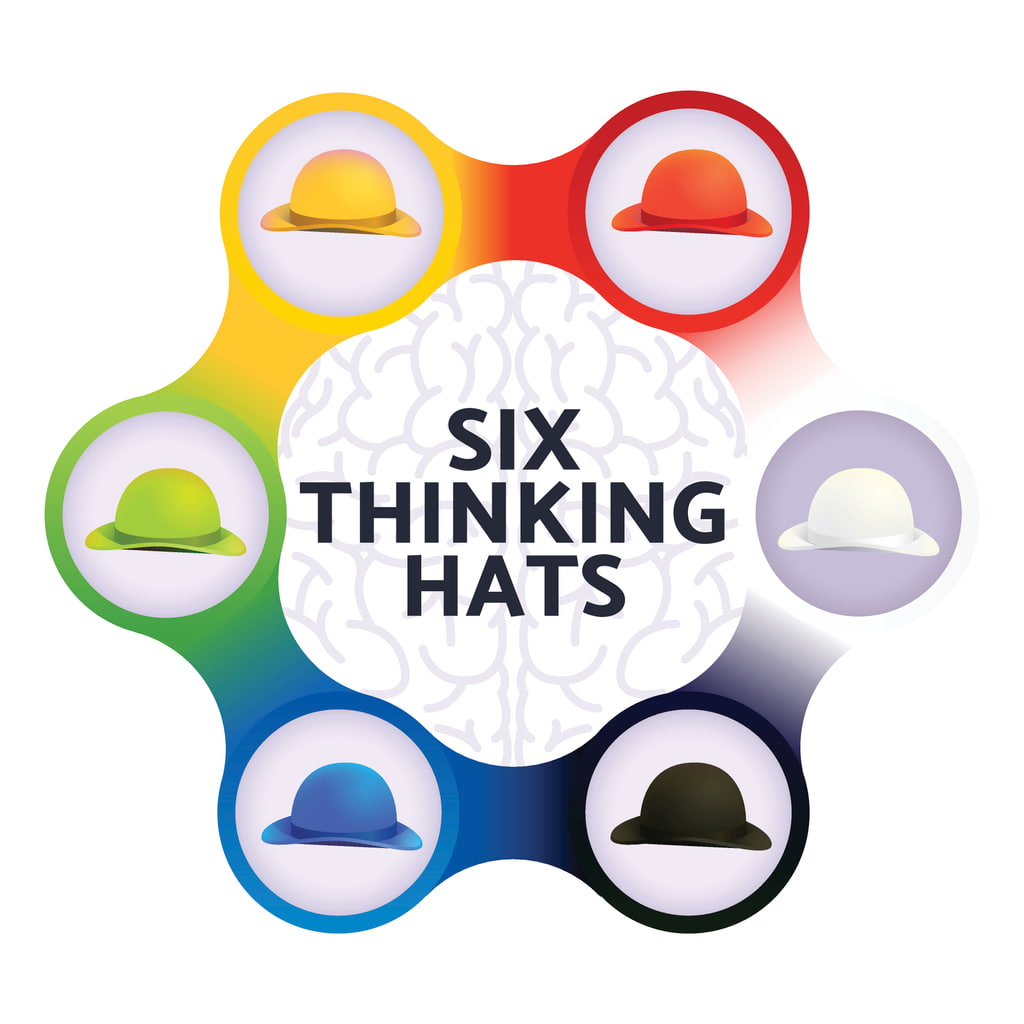The six thinking hats technique: examples of use
Have you heard of the ‘six thinking hats’ technique? There are many examples of innovative thinking, but none offer the variety of perspectives found in the method developed by the psychologist Edward de Bono. This concept is based on the need to navigate different viewpoints in order to effectively tackle problem solving.
Bearing that in mind, implementing the six hats methodology in the workplace can boost innovation, because it proactively fosters the exchange of viewpoints. But, how exactly does it do this? Here, we explain all about the six thinking hats technique - including examples of use - to better understand the process.
What is the six thinking hats technique?
When we talk about the six thinking hats technique, we're referring to a methodology designed to tackle decision-making and the resolution of conflicts. This strategy stems from the idea that a single way of thinking is purely subjective, and doesn't take all options into account. Therefore, in this method, the six hats represent six different approaches to thinking.
Meanwhile, it is useful to understand that this method is specifically designed for use in teams rather than individually - although that might also prove handy in certain contexts. Use of this six hats technique allows for the collaborative exchange of opinions, fostering critical thinking and debate that demands the combining of diverse roles in each team member.
What are the six hats of thinking?
Do you know about the different roles that are assigned to each of the so-called six thinking hats? Each hat is a different colour that evokes certain emotions, making them easier to associate with the specific type of thinking linked to each one. In this case, Edward De Bono chose blue, white, red, black, yellow and green for his technique.
The Blue Hat
Blue is a colour linked to control and leadership. Armed with this knowledge, whoever wears the blue hat coordinates the entire process: they will guide the group dynamics, assigning different roles to team members and steering the debate to ensure the set objectives are met.
The White Hat
The white hat is linked to neutrality, so the person assuming this role in the team is responsible for objective thinking. However, it is vital that within this role, they stick to the facts using only verified data, as well as presenting the necessary information to resolve conflicts or make impartial decisions.
The Red Hat
What feeling or emotion would you associate with red? Exactly - we’re talking about the most emotional role of the six thinking hats technique. In this case, the goal is to give the debate a less rational and more intuitive, human and emotional approach. Subjectivity and feelings are key to this position within the group.
The Black Hat
The black hat plays a pessimistic role in the debate, as this colour is associated with darkness. Whoever wears this hat should offer a cautious point of view and put forward, above all, the negative side of the ideas that arise, which is useful for analysing certain disadvantages that may not have been taken into account previously.
The Yellow Hat
As opposed to the previous hat, this hat is yellow, a colour that transmits light and positivity. Accordingly, the member assigned this hat should offer an optimistic assessment of the situation: they will have to stress the most positive aspects of the ideas and identify benefits that hadn't previously been noted.
The Green Hat
Lastly, green is the colour we associate with energy, nature and growth. This is the colour that represents the germination of new ideas in a debate process in which, until now, there had been no mention of creativity. Thus, whoever wears the green hat will be in charge of offering new ideas to the team.

The six thinking hats technique: examples of use
Seeing this six hats methodology in an example of use will help you to better understand the process and how to carry it out.
Imagine, for example, that at a company, a new scenario is going to be analysed using this technique: the implementation of a new ERP which dozens of company employees will be using.
- Blue hat: this team member - probably a manager - will be responsible for explaining the new proposal and assigning the roles for the debate.
- White hat: responsible for providing information about the roll-out of the new software and what this means for the company in objective terms.
- Black hat: this role will have to analyse and present the drawbacks of the ERP roll-out, e.g., that this is a risky investment or difficult to implement.
- Yellow hat: this role will highlight the positive aspects of the change, such as the new tools it offers or its ease of use, among other reasons.
- Red hat: this team member offers a more emotional vision, e.g., how workers will deal with the change, their feelings and subsequent attitudes about it, etc.
- Green hat: responsible for providing creative solutions, for example, a proposal for the gradual roll-out of the ERP to facilitate the process for employees.

The six hats of thinking in the professional field
Did you know that innovation is one of the soft skills most in demand on the labour market? According to a study by the American consulting firm McKinsey & Company that surveyed various executives, over 80% reported that innovation is one of their top priorities, but less than 10% said they were satisfied with this factor at their company.
The six thinking hats technique largely addresses the need to innovatively resolve problems. Ultimately, exchanging opinions serves to generate new ideas, which is essential in a professional context where adapting to constant changes is a must.
Hence, being aware of the high demand for innovation in the management departments of most companies - and learning to harness techniques such as the Six Thinking Hats - can give a boost to your career. Because contrary to what we might think, in this way, you can acquire a range of soft skills to apply to the workplace.
Want to keep learning? Do you want to develop professional skills that will help you access better job opportunities? Discover Santander Open Academy, the training space you need to keep growing.
Join our global platform for learning and professional development and access courses at zero cost, training content in a wide range of formats and scholarships from leading universities and institutions.
If, like us, you believe that we should never stop learning, sign up here and find out what we have for you!
More posts to read...
-

-
 29/09/2025 | Santander Universidades
29/09/2025 | Santander UniversidadesLearning English: the key to better job opportunities
Card text


